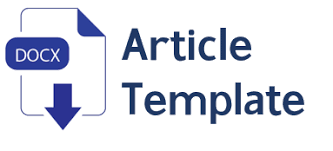The Use of Inquiry-Based Learning Strategy in Teaching Writing Skill for the Eighth Grade Students Junior High School
DOI:
https://doi.org/10.29408/veles.v2i1.606Abstract
This present study investigated the use of inquiry-based learning strategy in teaching writing skill for the eighth grade students of MTs. NW Dames in the school year 2016-2017. Research methodology that was used in this study was pre-experimental research and the design was a one group pretest and posttest design. The population was eighth grade students consisted of two classes and took one class as the sample. The sampling technique in this study was cluster random sampling. The data collection was done by administering pre and post-test to the eighth grade students of MTs. NW Dames (21 students). Then to analyze the data, the present researcher used a paired samples t-test by using SPSS 22 for windows. Based on the data analysis, the present researcher found that the mean score of pre-test was 59.14 and post-test was 63.62, it could be stated that null hypothesis was rejected and the hypothesis was accepted. Inquiry-based learning strategy was significantly effective in teaching writing skill for the eighth grade students of MTs. NW Dames in the school year 2016-2017. Considering the process and the results of this research, the present researcher suggested that English teacher can use inquiry-based learning strategy to teach students.
References
Alawi, F. F. (2011). Improving students’ ability in writing descriptive text using clustering techniqueAn Action Research at eight grade students of MTs. Darul Ma’arif Cipete-Jakarta. Undergraduate thesis. Cihan University, Erbil, Iraq.
Al-Jumaily, Samir. (2014). Improving my students' writing skill: an intensive course for ESL learners by using process-approach to writing with the assistance of computer word processor. 2(1),29-35.
Anderson, M., & Anderson, K. (1998). Text types in English 1. Australia: MacMillan.
Anderson, M., & Anderson, K. (1998). Text types in English 3. Australia: MacMillan.
Ary,Donald., et al. (2010). Introduction to research in education.Eighth edition. USA, Wadsworth: Cengange Learning.
Asrobi, Maman., Ari Prasetyaningrum. (2017). Trait based assessment on teaching writing skil for EFL learners. Available online at: https://doi.org/10.5539/elt.v10n11p199
Broughton, G.,Brumfit, C., Flavell, R., Hill, P., &Pincas, A. ( 1980).Teaching English as a Foreign Language Second Edition. Canada: Routledge.
Brown, H. D. (2003). Language assesment principle and classroom practice. Second edition. San Francisco, California: Pearson Longman.
Heaton, J. B. (1989). Writing English language test. London and New York:Longman Group.
Joyce, Bruce & Marsha Weil. (1992). Models of teaching. USA: Allyn and Bacon.
Moedjito. (2016). Basic statistik for reseach in language education. Surakarta: Yuma Pustaka
Putra, S, R. (2013). Desain belajar mengajar kreatif sains. Banguntapan, Jogjakarta: Diva Press.
Ratnasari, Nana. (2004). Tehnik menulis efektif. Bandung: Diva Press.
Riyanto. (2009). Mendesain model pembelajaran inovatif – progresif. Jakarta: Kencana.
Sanjaya, Wina. (2006). Strategi pembelajaran berorientasi standar proses pendidikan. Jakarta: Kencana.
Downloads
Published
How to Cite
Issue
Section
License
Authors who publish with VELES agree to the following terms:
- Authors retain copyright and grant the journal the right of first publication with the work simultaneously licensed under Creative Commons Attribution-ShareAlike 4.0 International License (CC BY-SA 4.0).
- Authors can enter into separate, additional contractual arrangements for the distribution of the journal's published version of the work (e.g., posting it to an institutional repository or publishing it in a book), with an acknowledgment of its initial publication in this journal.
- Authors are permitted and encouraged to post their work online (e.g., in institutional repositories or on their website) before and during the submission process, as this can lead to productive exchanges and earlier and greater citations of published work.
VELES is licensed under a Creative Commons Attribution-ShareAlike 4.0 International License.





